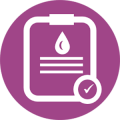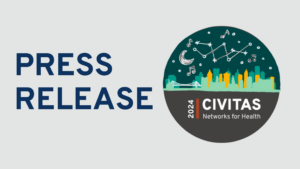Consideration 10

10. Manage patient results
Staffing
Consideration
Identify the appropriate staff to reach out to patients prior to the patient being tested.
Decide if there are staffing differences to consider for positive vs. negative results.
Manually calling each person can be resource intensive.
Voices from the Field
Electronic notification systems
Consideration
Apps and on-line portals are efficient but may limit meaningful provider follow-up with patients needing care.
OSCTCs may require patients to register in an EMR to streamline communication of results.
Read-receipts and built-in provider follow-up can support a strong follow-up process.
Voices from the Field
Know the best way to contact patients
Consideration
Discuss options for getting the patient their results prior to conducting the test.
Offer alternative ways to get patients their results.
Voices from the Field
Homeless populations
Consideration
Getting results back to the homeless population can present challenges.
Being clear about when OSCTC staff will come back to their testing location with their results may be a solution when no contact information is received.
A central, well-publicized hotline, may be an effective way of allowing patients to call to get their results.
Voices from the Field
Employer-sponsored testing
Consideration
Results may be directly shared to employers if this authorization is included in the consent process.
Identify key contacts at each facility that will receive results.
Consider using electronic platforms to streamline the process of sharing results for large numbers of employees.
Voices from the Field
Public health data requirements
Consideration
Test results also need to be shared appropriately and timely with public health officials.
Race and ethnicit data was frequently reported as challenging to receive.
The diversity of types of tests, laboratories doing testing, and increased number of point-of-care tests may require new systems to be built to ensure all results are captured centrally.
Moving away from faxes and using electronic systems will help ensure that all required information, including race and ethnicity, is collected during testing and transferred appropriately to health departments.
Voices from the Field
Off-Site Testing Toolkit Navigation Menu
Off-Site COVID-19 Testing Project home page
– – –
Off-Site COVID-19 Testing Toolkit home page
1. Identify and prioritize the population to be tested
2. Identify and mobilize your partners
3. Determine the type of OSCTC
4. Offer the right type of test
5. Adapt to variations in laboratory capacity and turnaround time
6. Staff Required for OSCTC
7. Build efficiencies into your OSCTC
8. Promote positive patient experience and community awareness
9. Address potential patient access limitations
10. Manage patient results
11. Plan for weather extremes
12. Provide PPE to staff
13. Financial viability/ sustainability
14. Explore a broader role for your OSCTC
Methodology
Additional Resources
Acknowledgements

